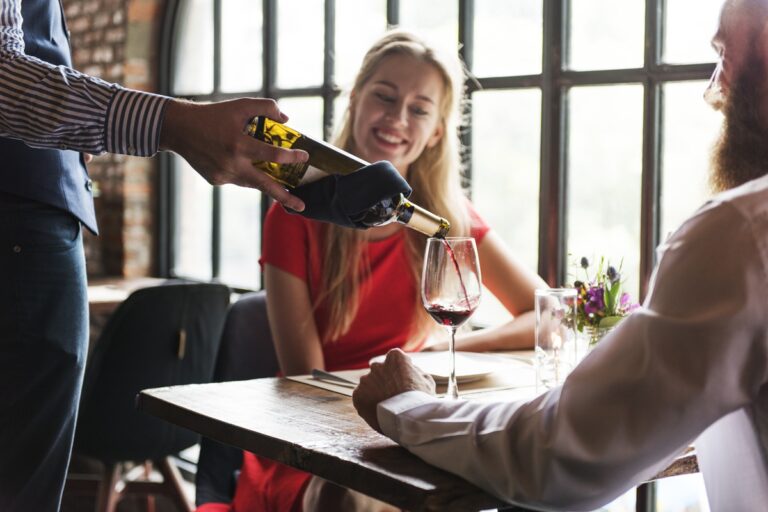You’ve booked that long-awaited European vacation, picked a charming little restaurant in Paris or Rome, and you’re about to enjoy what you think is a glass of authentic, high-end wine.
But what if that lovely glass of Rioja or Chablis you’re sipping was actually a leftover mix from someone else’s table?
Shocking, right? Well, experts are raising the alarm about a sneaky wine scam making a strong comeback in popular holiday spots—and it could be costing more than just your wallet.
The Wine Scam That Won’t Go Away
Dubbed “wine repotting,” this crafty trick is all about deception.
Staff members, sometimes under orders from management, gather the unfinished glasses and bottles that customers leave behind.
Instead of tossing them out, they quietly mix the contents together and refill generic, label-less bottles.
Then they serve the concoction to the next unsuspecting guest—often selling it as expensive varieties like Albariño or Rioja Reserva.
It’s Not Just in Europe Anymore
While this wine scam has long been a problem in well-known tourist destinations across Spain, Italy, and especially France, reports have now surfaced in parts of the United States and Asia too.
Paris seems to be a hotspot, with some waiters even admitting to the shady practice when interviewed anonymously.
A veteran server told Le Parisien, “When business is slow, we collect whatever’s left from bottles and sell it as premium white wine.”
Shocking, but apparently not rare.
You Might Not Even Notice
Wine experts involved in investigations have pointed out that the average drinker wouldn’t be able to tell the difference between a real Rioja Reserva and a blended table wine unless they’re trained to pick up on the subtle differences in aroma, color, and body.
So, unless you’re a sommelier, chances are you won’t notice you’ve been duped—at least, not right away.
More Than Just a Rip-Off: It Can Be Dangerous
Sure, nobody wants to pay top-shelf prices for leftover wine—but there’s a bigger concern here.
Because these wine mixes aren’t regulated, there’s no way to know what’s really in your glass.
Additives, allergens, or even spoiled wine could make their way into the blend.
For people with sulphite sensitivities or allergies, drinking repotted wine could lead to serious health reactions.
Local Authorities Are Aware… But Struggling
In cities like Paris, food and beverage inspectors are aware of the issue and have increased checks at bars and restaurants.
However, with thousands of tourists pouring in daily and tables turning quickly, catching these scams in action remains a challenge.
High-traffic tourist areas are especially vulnerable because visitors often don’t know local wine brands or how much a glass should cost.
That unfamiliarity makes them easy targets for shady wine practices.
How to Protect Yourself From Getting Fooled
Fortunately, there are some simple ways to reduce your chances of falling victim to this wine scam while traveling:
Order a Full Bottle
If you’re dining with friends or family, choose a full bottle instead of ordering by the glass.
Trustworthy restaurants will bring the sealed bottle to your table and open it in front of you, which makes tampering much harder.
Check the Bottle Closely
Pay attention to the label, cork, and foil cap.
Do they match the wine you ordered?
Do they look tampered with or previously used?
If anything feels off, speak up.
Use the White Napkin Test
Hold your glass up to a white surface—like a napkin or tablecloth.
In white wine, an unusual greenish hue could be a red flag.
Don’t hesitate to ask questions if the color seems strange.
Trust Your Nose and Palate
Good wine will have a balanced aroma and flavor.
If it smells unusually sharp, overly alcoholic, or just tastes flat and sour, don’t ignore your gut.
Chances are, it could be a repotted blend.
Be Wary of Cheap Glass Deals
That too-good-to-be-true happy hour wine special in a touristy zone?
It just might be.
Be cautious of ultra-cheap “by the glass” options.
It might be smarter—and safer—to pay a little more for a properly sealed bottle.
What Comes Next?
As awareness spreads, some hope that stronger enforcement and consumer vigilance will help put an end to these wine scams.
But in the meantime, savvy travelers need to be cautious, ask questions, and trust their senses.
Because when it comes to wine abroad, it’s not just about flavor—it’s about safety and getting what you paid for.

